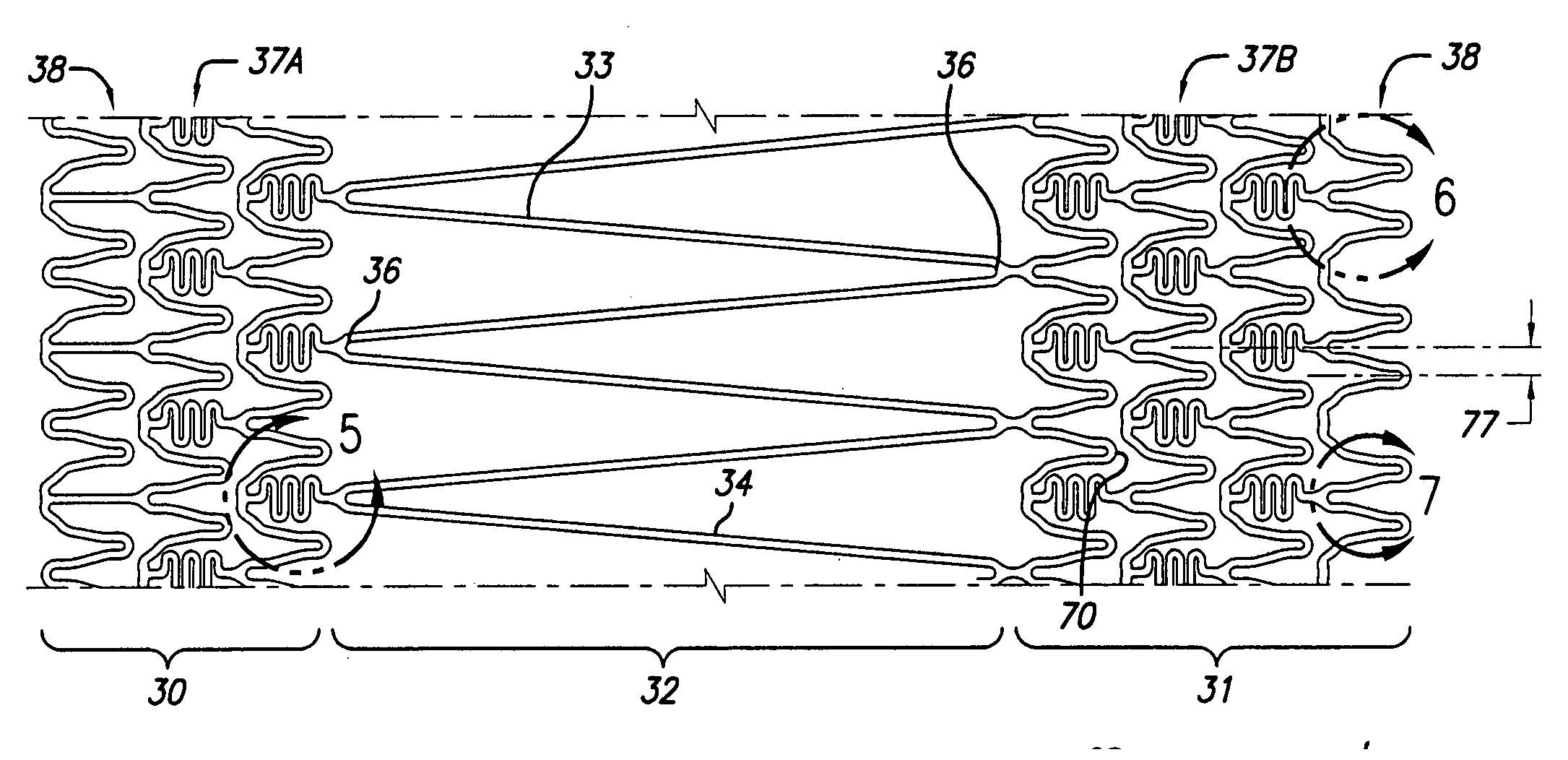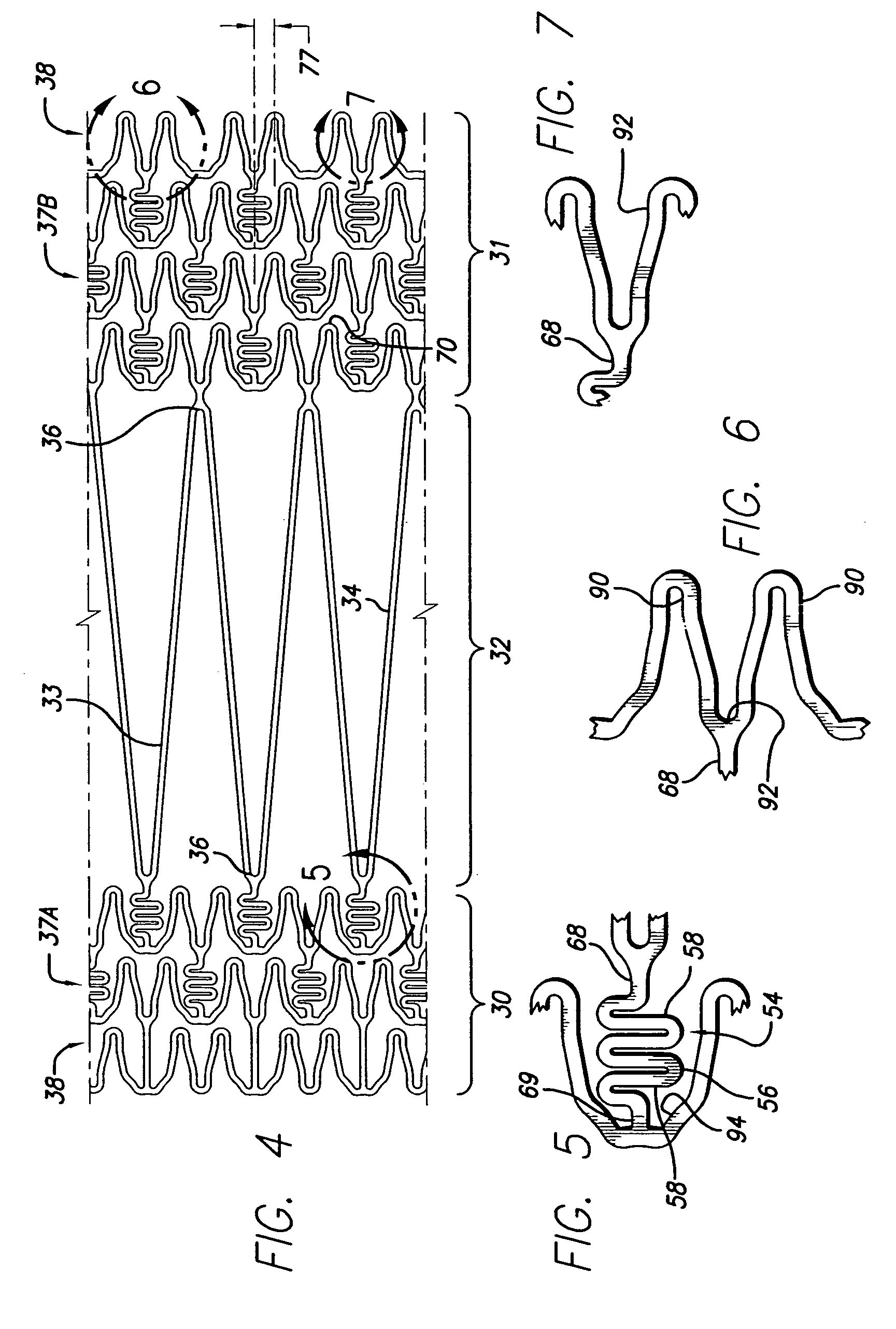Intravascular stent and method of use
a technology of intravascular stents and stents, which is applied in the field of intravascular stents, can solve the problems of arteries developing vulnerable plaques, and achieve the effects of reducing the promoting flexibility, and reducing the overall longitudinal flexibility of the sten
- Summary
- Abstract
- Description
- Claims
- Application Information
AI Technical Summary
Benefits of technology
Problems solved by technology
Method used
Image
Examples
Embodiment Construction
[0037] The present invention stent improves on existing stents by providing a longitudinally flexible stent having a uniquely designed pattern and novel interconnecting members. In addition to providing longitudinal flexibility, the stent of the present invention also provides radial rigidity and a high degree of scaffolding of a vessel wall at the stent ends and less scaffolding in the central section to intentionally promote smooth muscle cell growth. The design of the highly flexible interconnecting members and their placement nested within a W-shaped member provides for uniform scaffolding and a high degree of vessel wall coverage while the struts of the central section provide comparatively minimal vessel wall coverage.
[0038] Turning to the drawings, FIG. 1 depicts the present invention stent 10 mounted on a catheter assembly 12 which is used to deliver the stent and implant it in a body lumen, such as a coronary artery, peripheral artery, or other vessel or lumen within the b...
PUM
 Login to View More
Login to View More Abstract
Description
Claims
Application Information
 Login to View More
Login to View More - R&D
- Intellectual Property
- Life Sciences
- Materials
- Tech Scout
- Unparalleled Data Quality
- Higher Quality Content
- 60% Fewer Hallucinations
Browse by: Latest US Patents, China's latest patents, Technical Efficacy Thesaurus, Application Domain, Technology Topic, Popular Technical Reports.
© 2025 PatSnap. All rights reserved.Legal|Privacy policy|Modern Slavery Act Transparency Statement|Sitemap|About US| Contact US: help@patsnap.com



